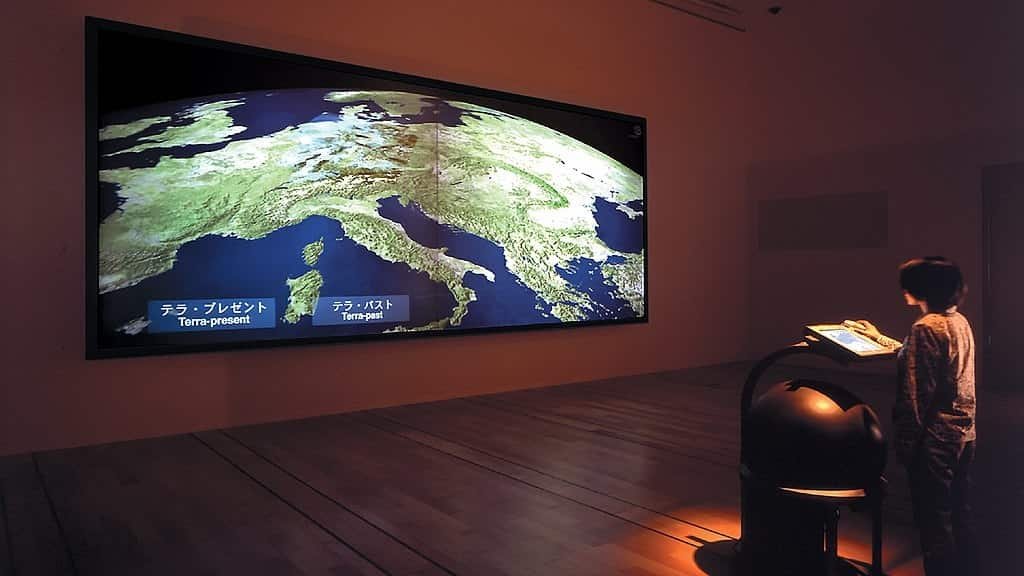Google Earth’s predecessor was German
Yes, Google Earth’s predecessor was German, and its creators sued the Americans for plagiarism: now Netflix has turned this story into mini-series.
In 2014, Google faced a lawsuit that got virtually no media coverage: A German study exposed the tech company for allegedly plagiarizing the code that Californians relied on to develop Google Earth. The story went virtually unnoticed, even by the German media, but has now been rescued from oblivion by Netflix, which has turned it into a four-part miniseries that delves into the miseries of Silicon. Valley.
To trace the origin of this dispute we must go back to the beginning of the 90s. During these years, the Berlin architecture studio Art + Com developed a project called Terravision which, conceived as a kind of work of art, has reconstructed the planet Earth through satellite images, aerial photographs and various architectural and geographical data. The coolest and newest thing about the app was that it was interactive and 3D, since its developers wanted users to feel like they had walked to the chosen location through their screens.
“Users can move freely and in real time on a photorealistic virtual earth. From the macro view of space to the micro view, they can virtually fly towards the surface of the earth: first the continents, then the cities and finally the architectural models of the individual buildings in high resolution”, specifies Art+Com on its website.
The Art + Com project quickly attracted the attention of companies in the technology sector and for its development it received funding from the innovation institute of the German telecommunications company Telekom. Finally, fIt was launched in 1994, 11 years before Google Earth.
After its launch, Art + Com continued to develop Terravision and present it at international technology fairs, while working on other projects, until in 2005 they were surprised by unpleasant news: Google, already a powerful multinational, had launched a tool very similar to that of the Germans.
From there, the study’s makers began exploring what options they had to claim compensation from Google for copying the idea. Apparently, in 2006, Art + Com met with Californians to negotiate the purchase of the patent, but the Americans made a very low offer which the Berliners rejected. Despite this, Google Earth continued to work.
Without compensation and feeling robbed, the managers of Art + Com decided to file a complaint against Google in 2014 for having based the development of its geographic tool on Terravision technology.
Spoiler alert! If you want to see the series, we recommend that you do not read the next paragraph.
After a period of litigation, which is reflected very well in the mini-series, the Americans won the case and the Germans returned to Berlin empty-handed.
Read also: Anna Delvey : how a stranger tricked the New York jet-set
Who won the lawsuit against Google?
In 2001 Google Earth was introduced; in 2006, ART +COM emailed Google about Terravision; Google ‘s chief technology officer Michael Jones 8 and Michelle Lee, then a Google attorney, expressed interest in acquiring the patent. However, ART +COM did not accept the offer, and in 2010 reapplied for its patent, asking Google to obtain a license. Failing to do so, ART +COM filed a lawsuit against Google in February 2014 for patent infringement, seeking US$100 million.
In May 2016, a jury in the United States District Court for the District of Delaware found that a Stanford Research Institute (SRI) geographic display system known as “SRI TerraVision” was used before Terravision.
In October 2017, the Federal Circuit Court of Appeals upheld that decision and invalidated ART +COM’s patent.
The series, a fiction very close to reality
Terravision, also TerraVision, is an interactive digital terrestrial globe, developed from 1993, by the Berlin agency ART+COM, which uses the image of the Earth as a spatial information organization system. The artistic project was presented to a large audience at the ITU (International Telecommunication Union) conference in Kyoto at the end of 1994. In 1995, the installation was presented at SIGGRAPH in Mountain View, California.
Several years after this lawsuit, of which there is virtually no published information, screenwriter Oliver Ziegenbalg stumbled upon the story and decided it was good material to create a fictional miniseries. Under the name ‘The billion dollar code’, it can be seen on Netflix since last October 7, 2021.
The series is therefore a fiction, not a documentary. However, the protagonists of the real story consider that beyond the dramatization of certain facts and characters for cinematographic reasons, the fundamental aspects of the dispute that appear on the tape are quite close to reality.
“For cinematic reasons, some details are omitted and others are simplified to make the complicated subject of software development understandable to all audiences. But the main aspects of the creation of the tool and the legal process are however quite close to the real facts”, explains Art+Com in a press release.
Likewise, the German study points out that “we do not participate in the production, although we are satisfied with the cinematic adaptation of the story, which illuminates a central aspect of our entity as designers, artists and developers.”
Who won the lawsuit against Google?
In 2001 Google Earth was introduced; in 2006, ART +COM emailed Google about Terravision; Google ‘s chief technology officer Michael Jons 8 and Michelle Lee, then a Google attorney, expressed interest in acquiring the patent. However, ART +COM did not accept the offer, and in 2010 reapplied for its patent, asking Google to obtain a license. Failing to do so, ART +COM filed a lawsuit against Google in February 2014 for patent infringement, seeking US$100 million.
In May 2016, a jury in the United States District Court for the District of Delaware found that a Stanford Research Institute (SRI) geographic display system known as “SRI TerraVision” was used before Terravision.
In October 2017, the Federal Circuit Court of Appeals upheld that decision and invalidated ART +COM’s patent.
Sources: PinterPandai, ART+COM Studios, Deutsche Welle, Cision
Photo credit: ART+COM (CC BY-SA 3.0) via Wikimedia Commons
Photo description: TerraVision installation “Terra Present / Terra Past” at Intercommunication Center Tokyo, 1998.



